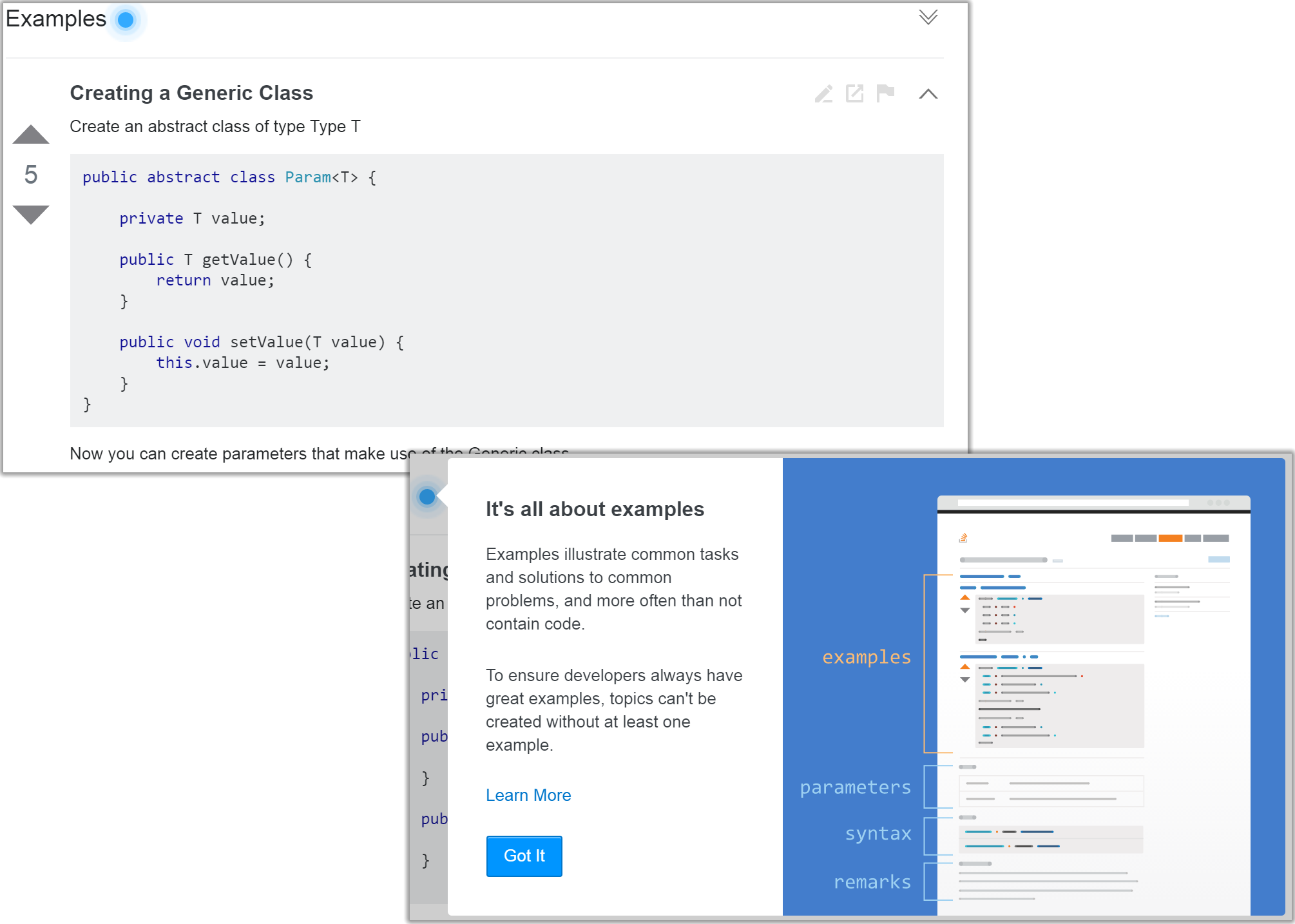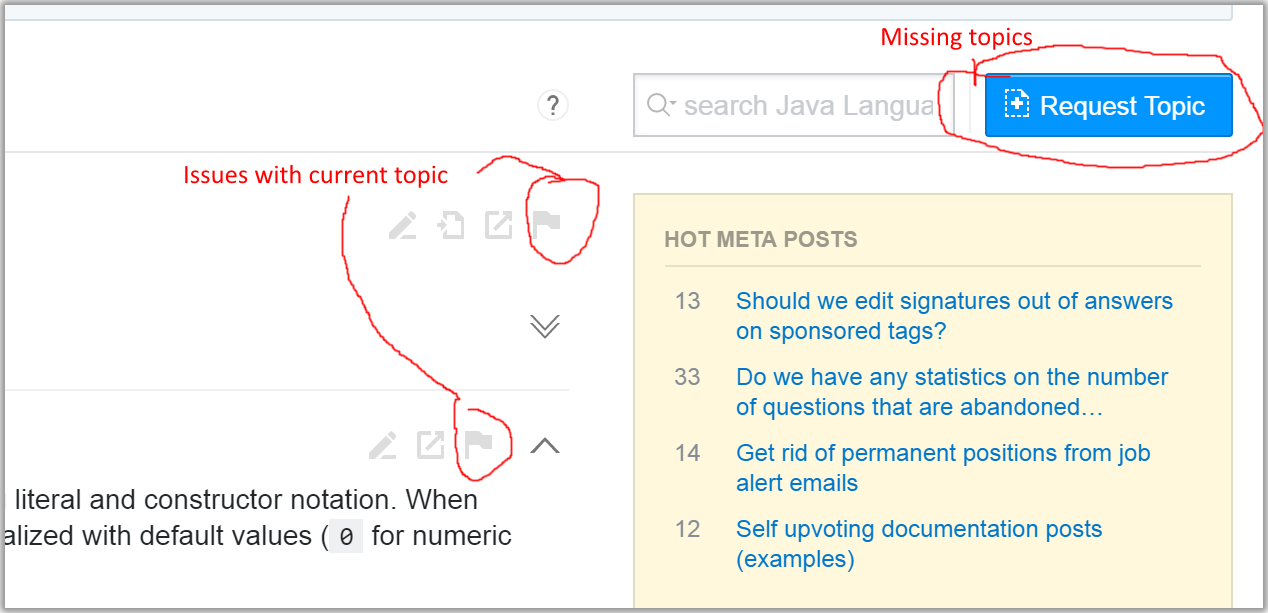The big expansion we started on so many months ago, Documentation, is finally out of private beta!
Take a moment and read the blog announcement
Also go and play with Documentation for a bit, read through the help pages, and take the tour.
Anywhere you see a glowing blue dot, you can click to get additional information. You can click the (?) at the top of a page to make all the blue dots visible again.
We’ve clearly put a lot of thought into Documentation, and the private beta a few thousand (seriously, wow guys) Stack Overflow users participated in has taught us a lot more but…
We’re still figuring a lot out, and we want your help
We want to hear from you about what’s missing, and what needs work. Upvote the good content you see, downvote the bad, request what is missing, and contribute where you’re comfortable helping out. We’re all in this together.
While you’re doing all that, remember: Documentation applies a lot of the lessons learned from Q&A, but it’s not Q&A. While the basics translate (peer review, by developers for developers, and be excellent to each other) many of the specifics probably don’t.
Things like forbidding...
- "too broad questions"
- "too small edits"
make perfect sense in Q&A, but don’t really in Documentation. Similarly, very narrow questions are great for Q&A but very narrow requests aren’t good for Documentation.
There are a few things we don’t think will work very well in Documentation, like..
- machine generated docs (think Javadocs)
- anything of that nature is well served today, and would obfuscate the examples we’re trying to create
- things you don’t use with code
- while not literally every example needs code, there’s a pretty deep assumption that every topic covers something developers use while coding
Finding Ways To Contribute
There are several ways help improve Documentation.
First, just browse and make the changes (just click the pencil icons) you think are improvements (and if you can’t make them, you can always request them).
Second, you can browse outstanding requests for new topics and examples in a tag’s request list.
Finally, a tag’s Documentation Dashboard lists all the proposed changes, topic requests, and improvement requests. You can browse from the dashboard, or subscribe to queues to have some pending items pushed to your Stack Exchange Inbox periodically.
Starting Documentation
Several tags already have Documentation that was created in the private beta. To add Documentation to tags that don’t have any, there’s a small commitment process.
To avoid creating ghost towns, tags must be relatively active to get Documentation (a few hundred questions overall, and activity in the last few days). In order to commit, you must have a positively scored answer in the tag and at least 150 reputation.
Committers are automatically subscribed to notifications when the commitment succeeds.
Q&A Isn’t Changing
To be clear, none of the rules or community norms for Q&A are changing. Just because a link points to Stack Overflow Documentation doesn’t mean link-only answers are acceptable now, for example. Documentation is expanding Stack Overflow, not radically altering the Q&A on Stack Overflow.
The integration points for Documentation and Q&A are pretty small:

There’s a new link insertion dialog

If a tag has Documentation, it gets a callout on the question lists

If a tag is eligible for Documentation but doesn’t have it, a way to propose Documentation gets a callout on question lists
What’s to come
There are things we know we’re going to do that just weren’t ready in time for launch.
- Code blocks with multiple languages (think MSDN’s C#/VB/F# switcher)
- Mobile views
- Embeddable topics and examples for 3rd parties
- Improved search
Documentation is in beta, so we know we’re going to learn a lot in the coming months. This list will grow accordingly.












